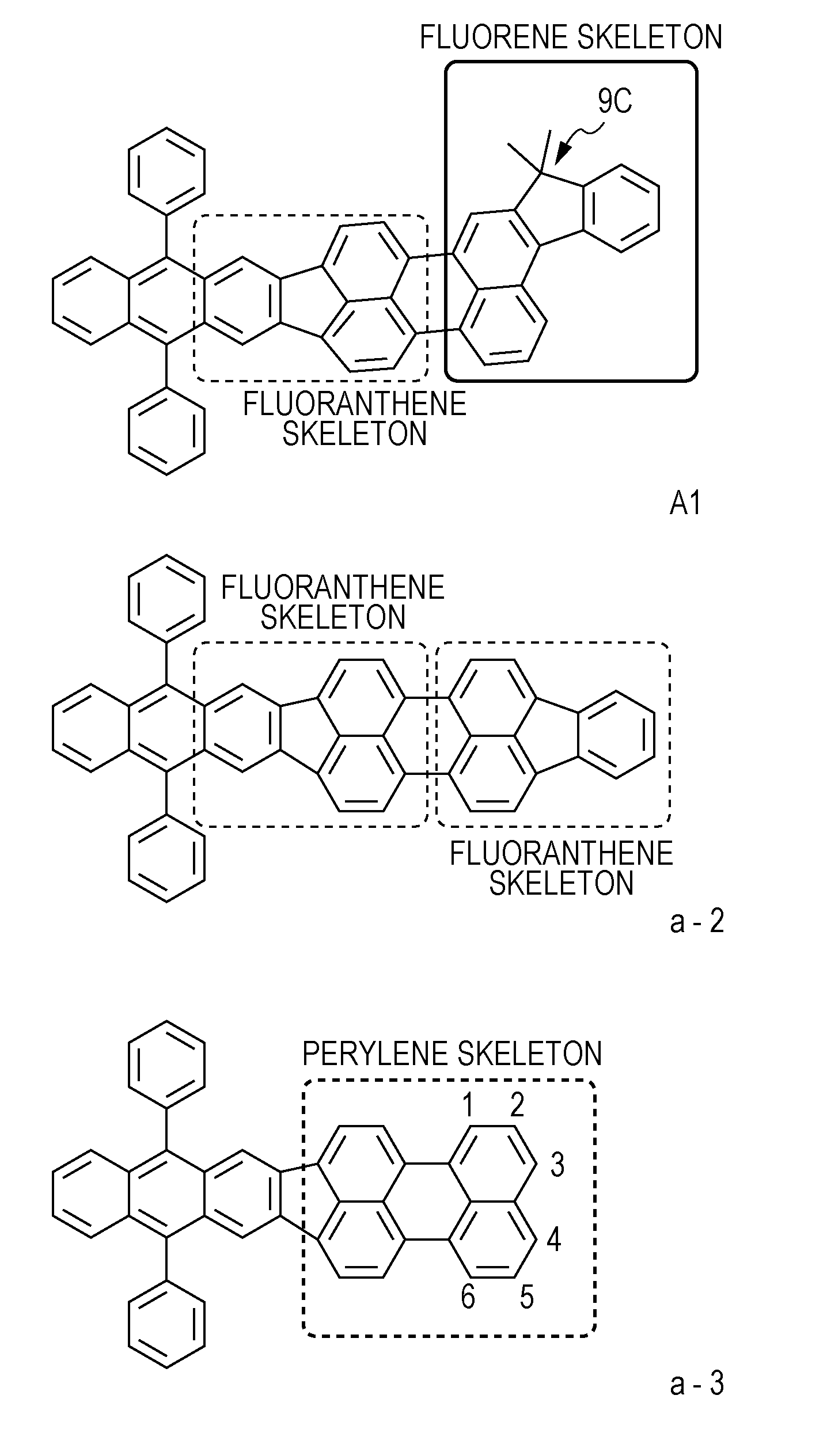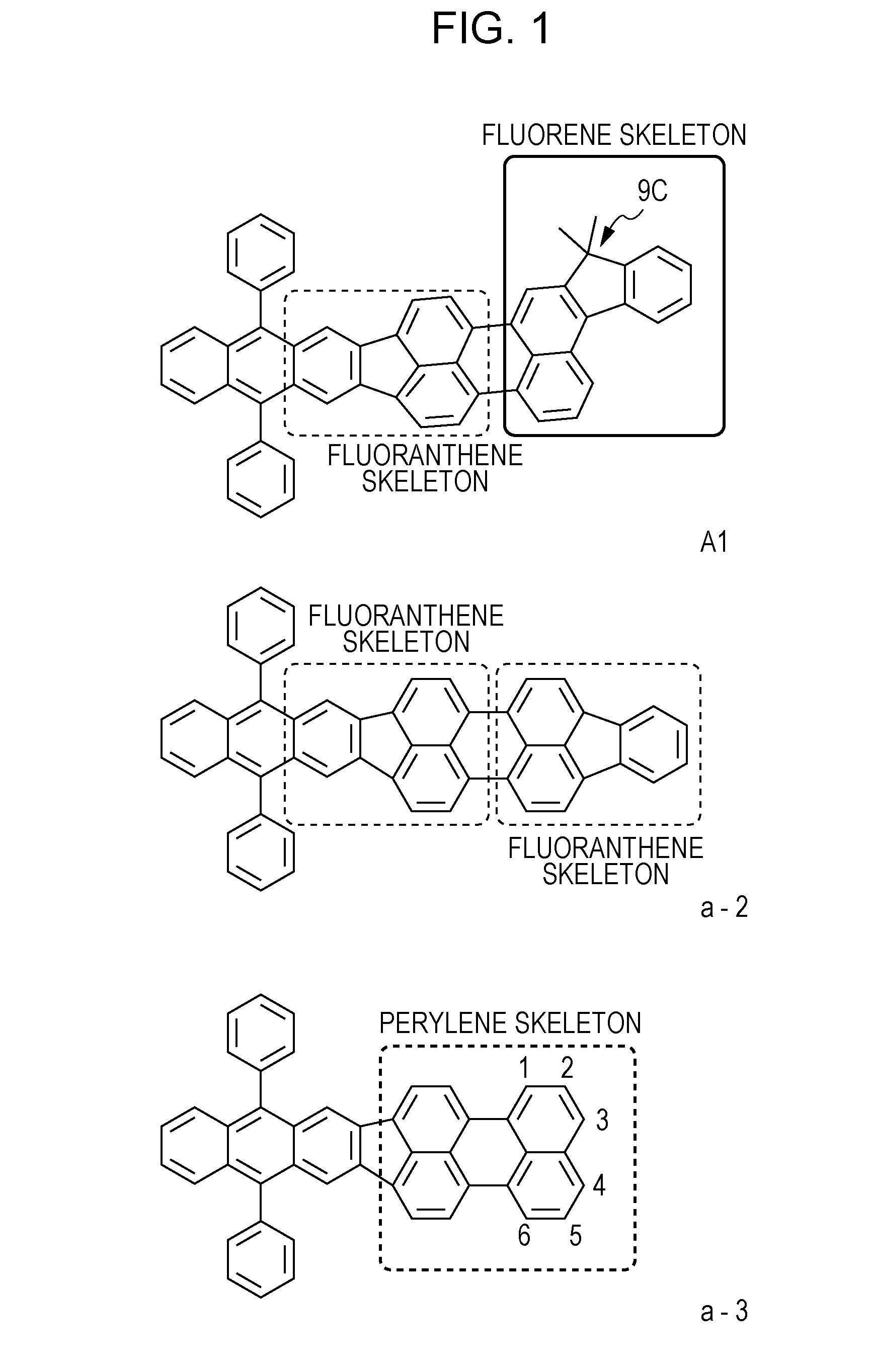Novel organic compound and organic light emitting element using the same
- Summary
- Abstract
- Description
- Claims
- Application Information
AI Technical Summary
Benefits of technology
Problems solved by technology
Method used
Image
Examples
example 1
Synthesis of Example Compound (C1)
[0117]After a toluene solvent (42 ml) was deaerated, 0.28 g (1.25 mmol) of palladium acetate(II) and 0.62 g (2.50 mmol) of s-phos were added and were then stirred for 10 minutes at room temperature. Subsequently, after 4.74 g (12.5 mmol) of the compound (F2), 3.19 g (2.50 mmol) of potassium phosphate, and distilled water (1 ml) were added, 5.0 g (12.5 mmol) of the compound (F1) was finally added, and stirring was performed at 95° C. for 3 hours. After cooling, methanol was added, and filtration was then performed. After chlorobenzene (500 ml) was added to this residue and was heated to 100° C., this solution in this state was then processed by a silica gel column chromatography (moving phase; toluene) followed by condensation. After the condensed product was dispersed and washed with acetone, filtration was performed followed by drying, so that 5.96 g of the orange solid (F3) was obtained (yield: 77%).
[0118]After a DMF solvent (180 ml) was deaerated...
example 2
Synthesis of Example Compound (A1)
[0125]The following synthetic reaction was performed as in the case of Example 1 except that the compound (F8) was changed to the following compound (F12), so that the following compound (F14) (example compound (A1)) was synthesized.
[0126]After a toluene solvent (18 ml) was deaerated, 39 mg (0.043 mmol) of Pd2(dba)3(0) and 61 mg (0.13 mmol) of x-phos were added and were then stirred for 10 minutes at room temperature. Subsequently, after 600 mg (0.85 mmol) of the compound (F7), 192 mg (0.89 mmol) of the compound (F12), 540 mg (2.6 mmol) of potassium phosphate, and distilled water (0.5 ml) were added, stirring was performed at 120° C. for 2 hours. After cooling, extraction was performed with toluene, and drying was then performed with sodium sulfate. After condensation was performed, the product thus obtained was then processed by a silica gel column chromatography (moving phase; toluene), and condensation and drying were then performed.
[0127]After c...
example 3
Synthesis of Example Compound (B1)
[0130]Except that the compound (F12) was changed to the following compound (F15), the example compound (B1) was synthesized in a manner similar to that of Examples 1 and 2.
[0131]By a mass spectrometry, M+ of the example compound (B1) was confirmed to be 770.
[0132]In addition, as in the case of Example 1, when the emission spectrum of the example compound (B1) in a toluene diluted solution was measured at room temperature, the maximum emission wavelength was 603 nm.
PUM
| Property | Measurement | Unit |
|---|---|---|
| Electric potential / voltage | aaaaa | aaaaa |
| Light | aaaaa | aaaaa |
Abstract
Description
Claims
Application Information
 Login to View More
Login to View More - R&D
- Intellectual Property
- Life Sciences
- Materials
- Tech Scout
- Unparalleled Data Quality
- Higher Quality Content
- 60% Fewer Hallucinations
Browse by: Latest US Patents, China's latest patents, Technical Efficacy Thesaurus, Application Domain, Technology Topic, Popular Technical Reports.
© 2025 PatSnap. All rights reserved.Legal|Privacy policy|Modern Slavery Act Transparency Statement|Sitemap|About US| Contact US: help@patsnap.com



